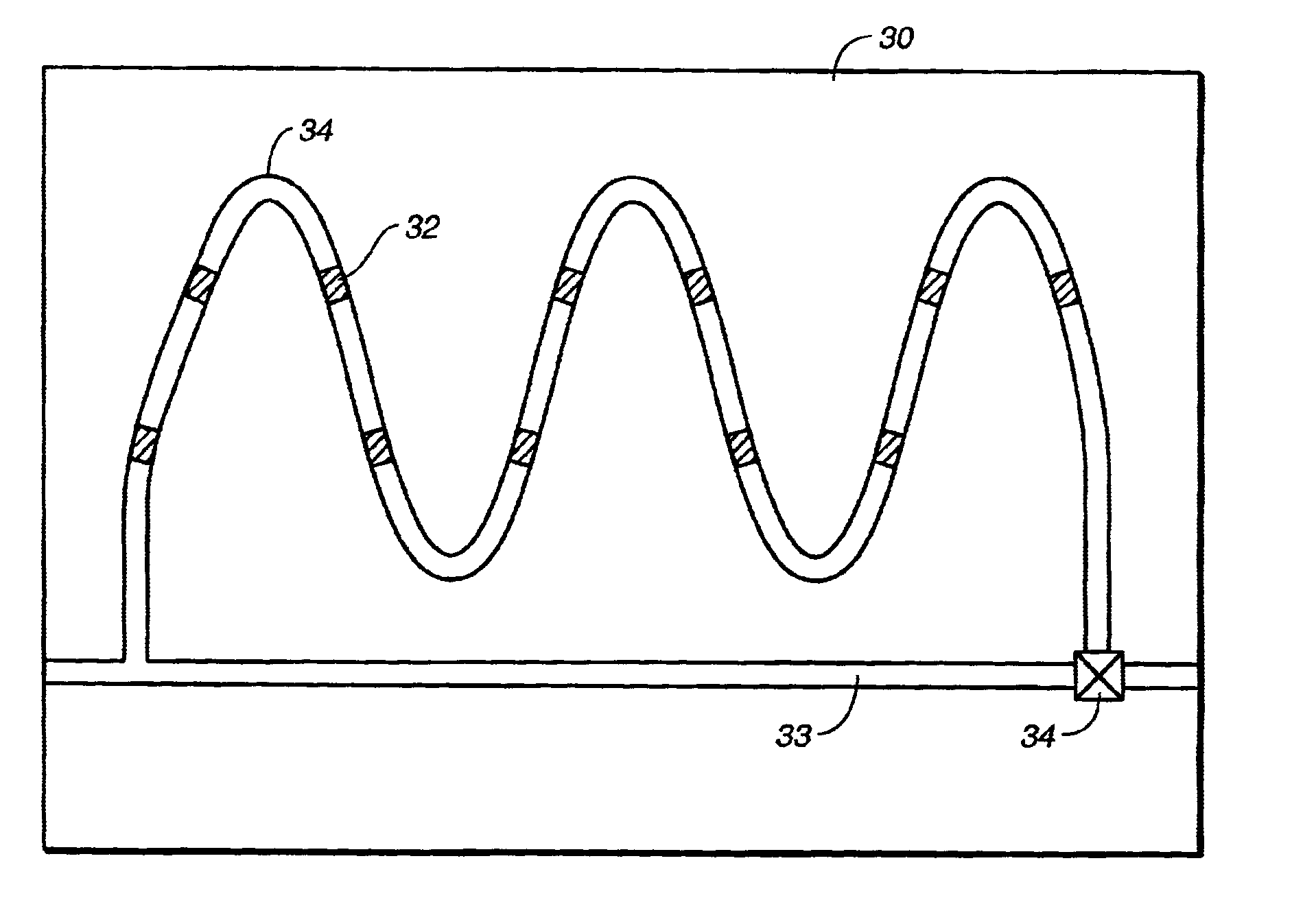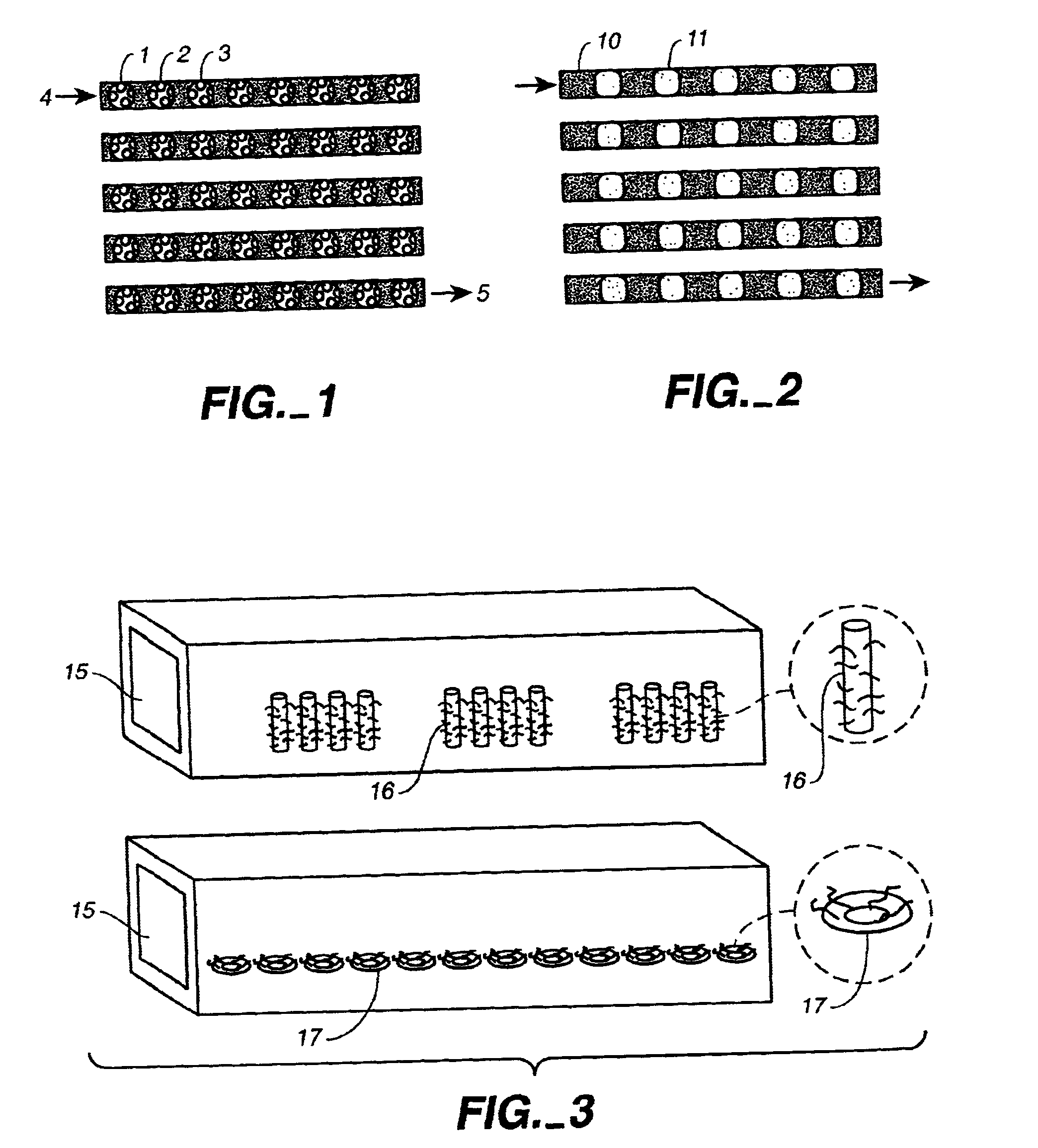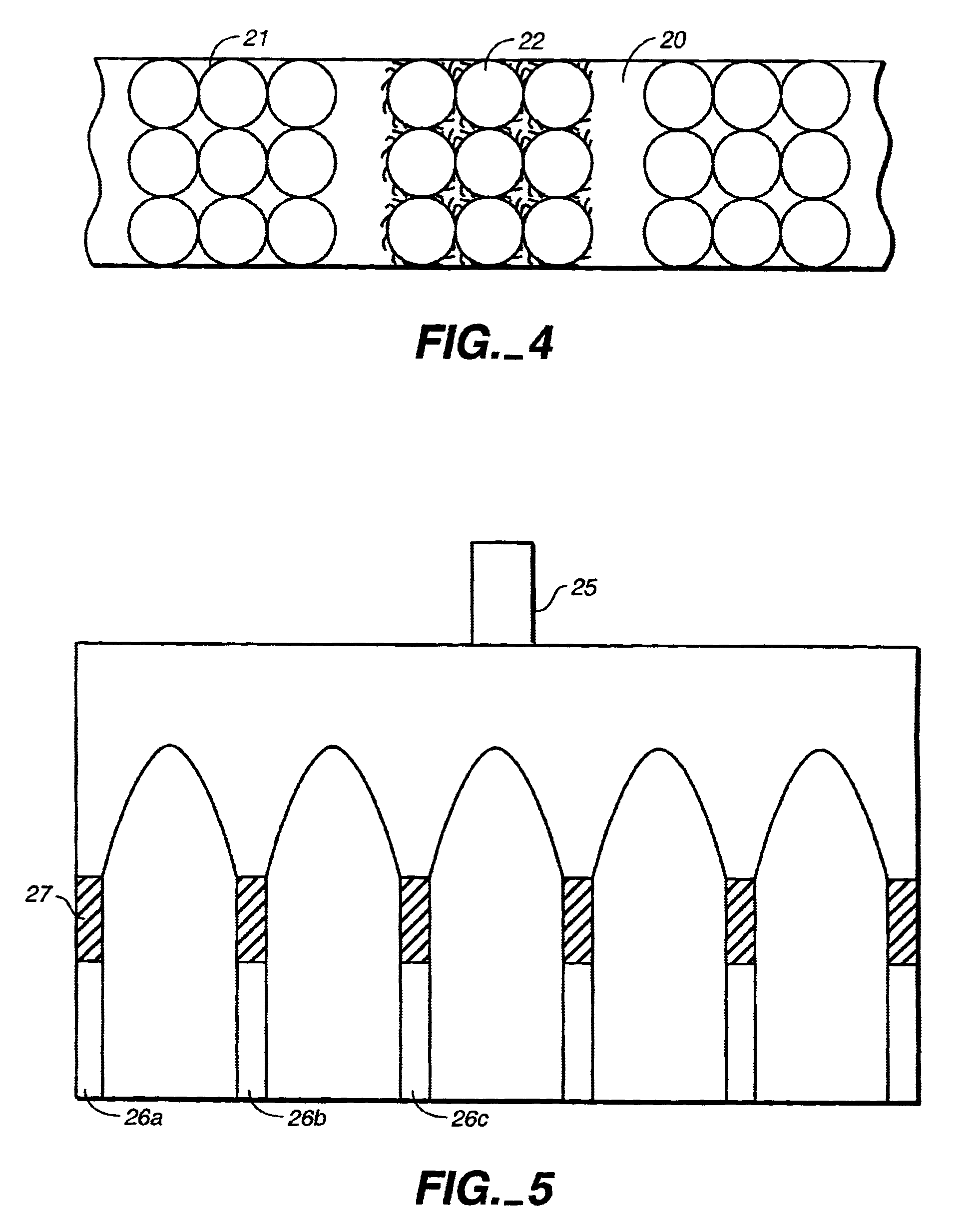Biochannel assay for hybridization with biomaterial
a biomaterial and assay technology, applied in the direction of material analysis, fluid speed measurement, optical light guide, etc., can solve the problems of single base mismatch, single base mismatch, and inability to control the stringency of each individual probe site, so as to improve the stringency control of hybridization and shorten the assay time , the effect of increasing the rate of hybridization
- Summary
- Abstract
- Description
- Claims
- Application Information
AI Technical Summary
Benefits of technology
Problems solved by technology
Method used
Image
Examples
Embodiment Construction
[0021]The chips microfluidic channels of the present invention are channels generally less than 200 microns in plastic with molding or embossing technology. The channels need to be of the dimension to support pumping of the microfluidic system The microfluidic channel may have any shape, for example, it may be linear, serpentine, arc shaped and the like. The cross-sectional dimension of the channel may be square, rectagular, semicircular, etc. There may be multiple and interconnected microchannels with valves to provide for recirculation.
[0022]The section of solid material maybe chips made of glass, ceramic, metal, silicon or plastic. Chips are preferably fabricated from plastics such as expoxy resin, polyacrylic resins, polyester resins, polystyrene, polycarbonate, polyvinyl chloride and the like. Specific binding pairs are DNA / DNA or DNA / RNA complementary binding pairs.
[0023]Fluid propelling components such as pressurized gas, vacuum, electric field, magnetic field and cetrifugal ...
PUM
| Property | Measurement | Unit |
|---|---|---|
| flow rate | aaaaa | aaaaa |
| microstructures | aaaaa | aaaaa |
| electrical field | aaaaa | aaaaa |
Abstract
Description
Claims
Application Information
 Login to View More
Login to View More - R&D
- Intellectual Property
- Life Sciences
- Materials
- Tech Scout
- Unparalleled Data Quality
- Higher Quality Content
- 60% Fewer Hallucinations
Browse by: Latest US Patents, China's latest patents, Technical Efficacy Thesaurus, Application Domain, Technology Topic, Popular Technical Reports.
© 2025 PatSnap. All rights reserved.Legal|Privacy policy|Modern Slavery Act Transparency Statement|Sitemap|About US| Contact US: help@patsnap.com



